Rane Roatta’s psychedelic gravel racing rig is as unique as the varieties of fruit he sells for a living.
A 200mm stem and very narrow handlebars enable Roatta to hunch into an aero tuck he calls the ‘shrimp’.
The three-time undefeated Florida Gravel state champion also races with four bottle cages – including one on the top tube of his Cannondale Topstone Lefty frame.
A gigantic single chainring and custom carbon wheel with multi-coloured spokes are among other eye-catching features.
We’ve spoken to Roatta, 30, about his bike and asked what’s behind his tech choices.
Rane Roatta’s custom Cannondale Topstone Lefty
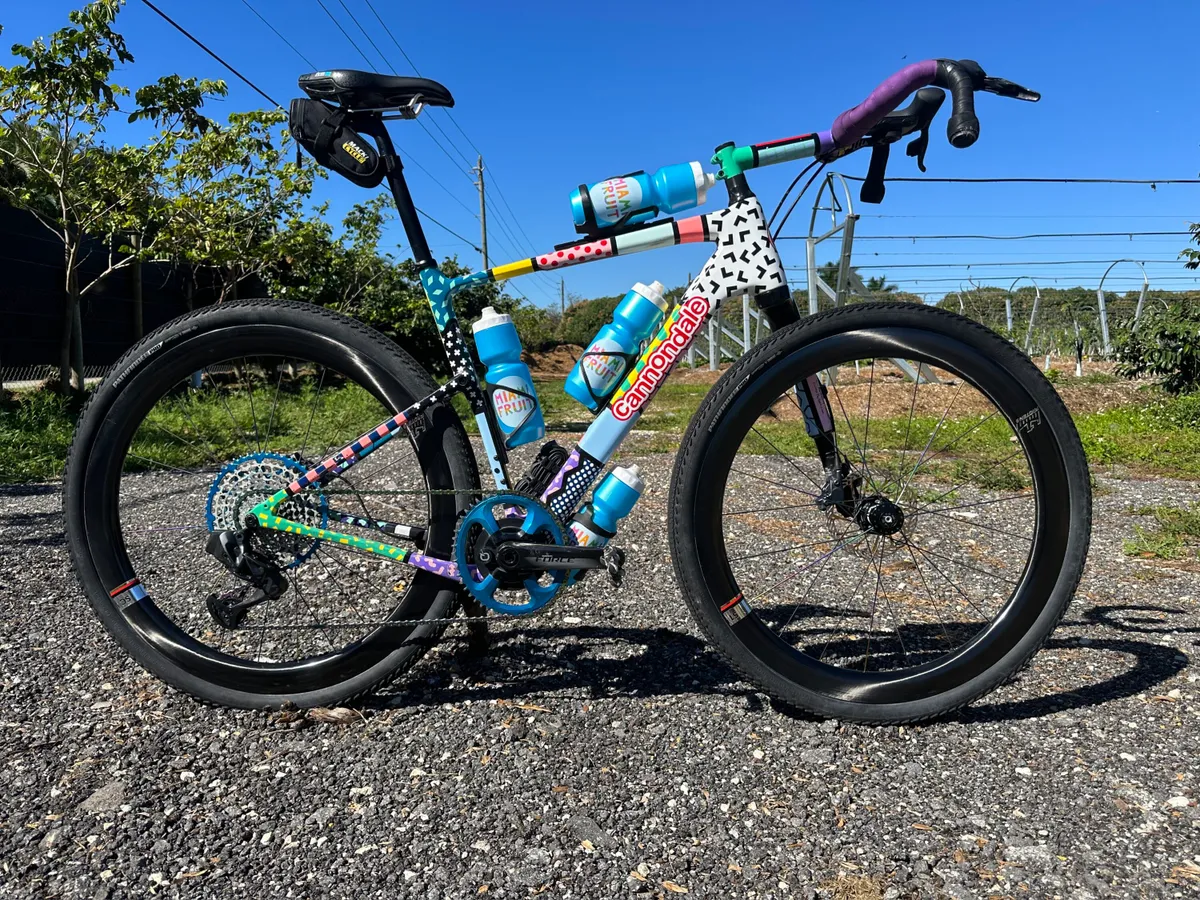
Roatta’s bike is built around a Cannondale Topstone Lefty frame and fork with a plethora of custom parts and an aero-optimised cockpit.
“It’s the best gravel bike I’ve ridden," he says. "It feels like a mountain bike with rocket boosters – it’s super-smooth and goes so fast.”
Just how big is that chainring?
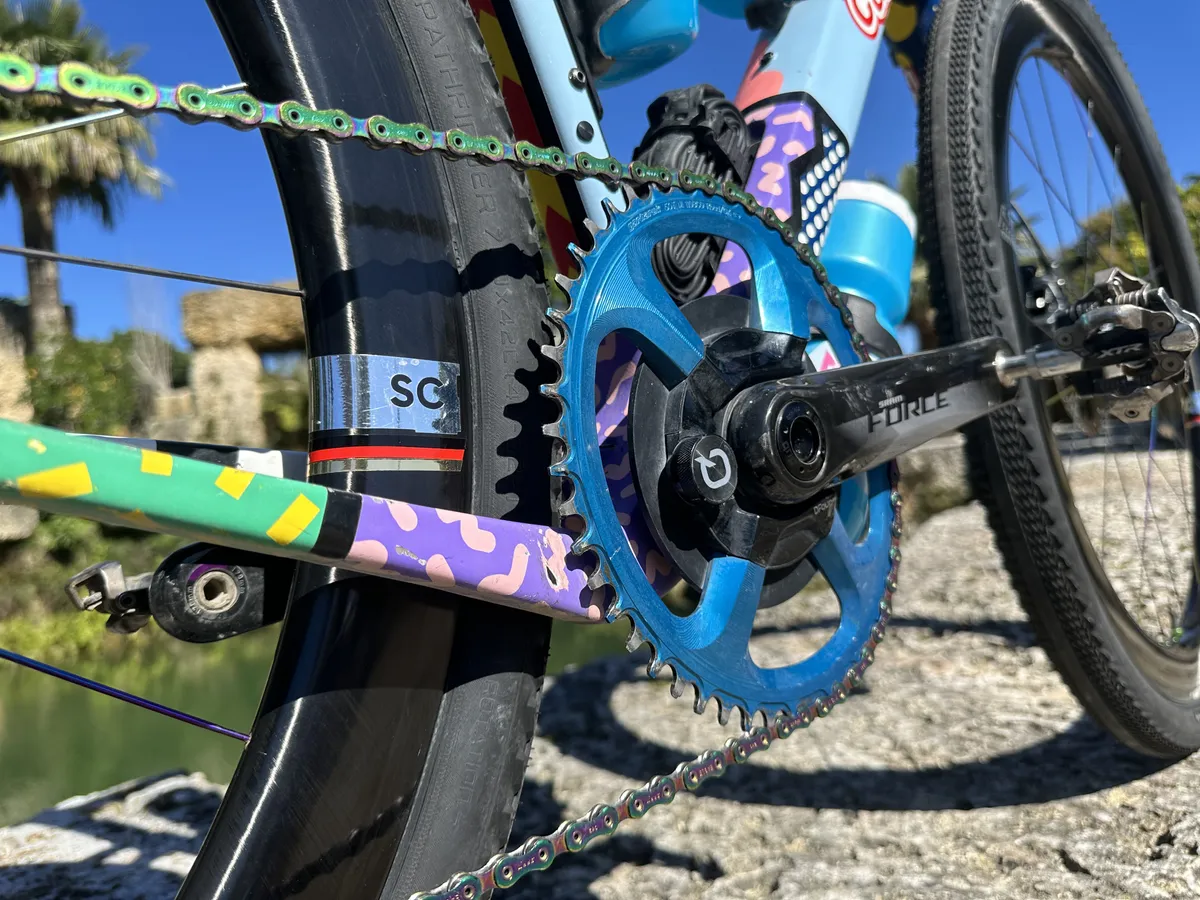
Roatta runs a single 50t oval chainring and 10-52t cassette from Garbaruk. He says his 50/10 highest gear enables him to pedal when travelling up to 65km/h with a tailwind and on paved sections of gravel races.
“If the maximum [gear] you can fit on is a 48/11, you risk spinning out on downhill sections or in a group on the flat,” Roatta says.
He adds that a lower cadence from bigger gears helps maintain stability on bumpier gravel trails. Roatta runs SRAM 170mm cranks and uses a Quarq power meter.
Yes – that is a 200mm-long titanium stem
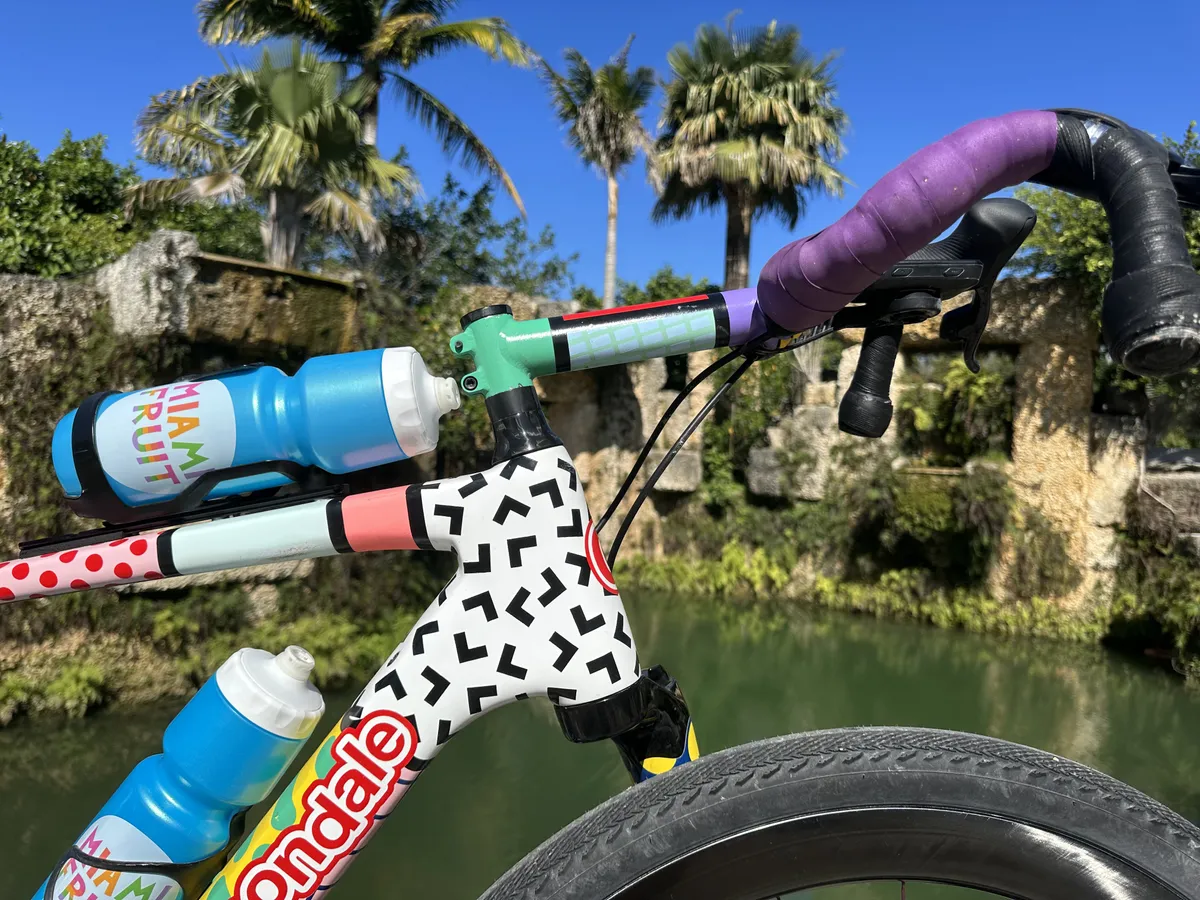
Roatta is 6ft 3in but uses a 200mm stem on a medium (approximately 54cm equivalent) Cannondale Topstone frame.
“The long stem gives a longer reach, which helps me get tucked down with my arms level [to the stem] or below level.”
Roatta says using a smaller frame also enables him to expose a little more seatpost, improving comfort.
‘Shrimp’ aero tuck
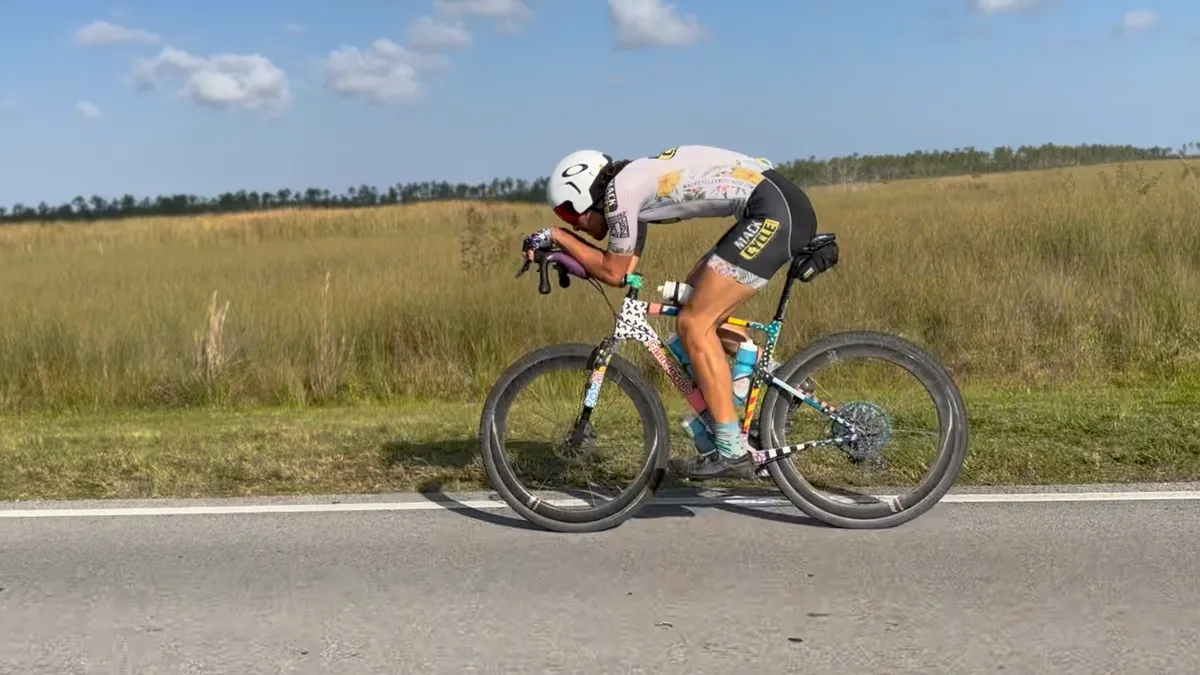
Roatta believes his background in triathlon gave him the ability to hold a crunched-up aero position he calls the ‘shrimp’.
In a solo breakaway or headwind stretches in gravel races, Roatta says: “Aerodynamics is the biggest thing holding you back.”
The long stem and narrow bars help Roatta get his arms close together and his head below his wrists and hands.
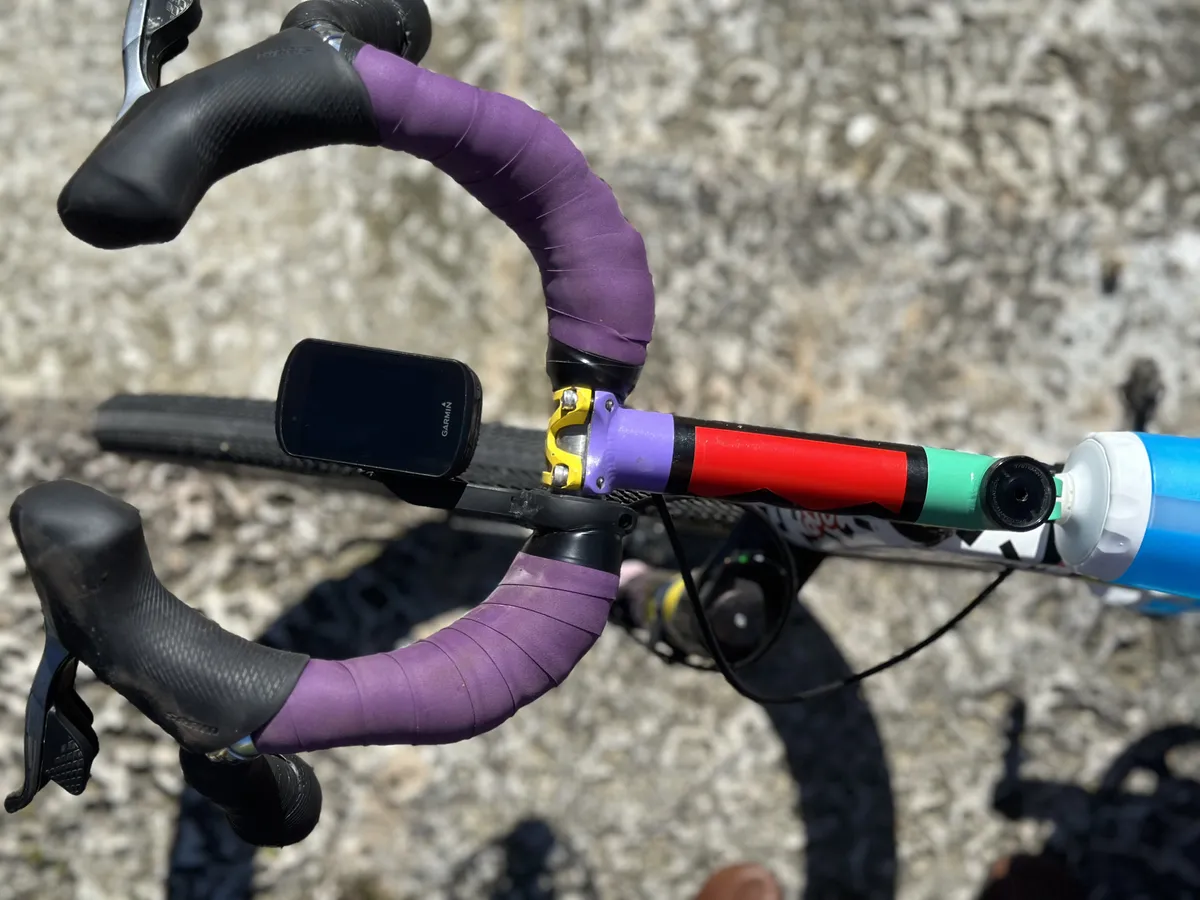
Roatta uses UCI-legal handlebars, which are 35cm wide at the drops. However, he rests his elbows on the bars – an illegal position under UCI road and gravel racing rules.
He bought a set of 55cm alloy handlebars from Amazon. He then had a friend cut them down to 25cm across the tops and weld them back together. The hoods are turned in 110mm from the centre.
His mid-arm rests on the top of the bars, which he double wraps the tape on to boost comfort. He then hooks his fifth fingers underneath the shifters.
“My weight is being held by my pinky finger and I’m able to brake and shift with my front two fingers,” says Roatta.
Custom paintjob
Roatta commissioned artist Curtis Bullock to paint the frame he received from his sponsor Cannondale.
“It’s wacky, colourful, attention-drawing. It’s a loud and playful, attractive style,” says Roatta.
“When he sent back the bike, I unboxed it and was blown away.”
The custom paintjob cost $1,000, bringing the total value of the 'killer gravel bike' to about $8,000, reckons Roatta.
Suspension is the future

Roatta uses the stock Cannondale Topstone Lefty single-bladed fork and Kingpin seatpost.
He says: “When I slam the saddle forward to be over the bottom bracket, it helps to have extra damping in the seatpost.
“The dual suspension of the bike helps me stay comfortable in my aggressive, aero position.”
He predicts that gravel bike suspension will soon become the norm for the genre.
Horses for courses
While optimal for fast, flat gravel races, such as the Unbound 200, Roatta says he wouldn’t use his current setup for “bombing down descents”.
He will switch to a 27cm Worx handlebar for more stability in the UCI World Gravel Championship qualifiers.
Four bottles cages
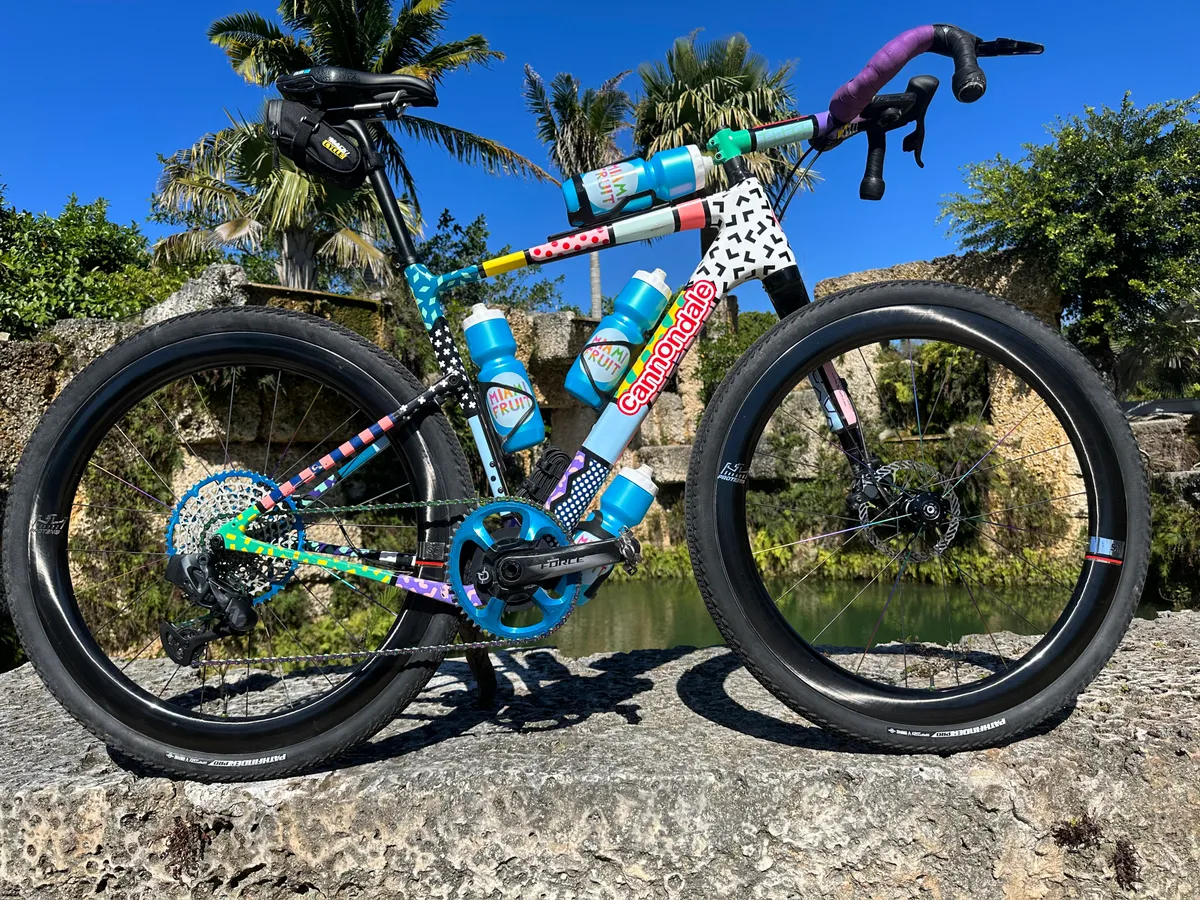
Roatta prefers to carry four bottles, since dropping one is common in gravel races. It also means he doesn’t have to wear a hydration pack, which would interfere with his aero position.
Despite one being mounted to the top tube, it doesn’t leak, according to Roatta.
However, a race the length of Unbound may require him to carry a bladder taped to the inside of his skinsuit.
“Hydration is so important and these races are becoming eating contests. The more you eat, the more you need to drink. If you eat 500kcal an hour, you’ll need to drink a litre an hour,” says Roatta.
Heavy wheels… to go faster?
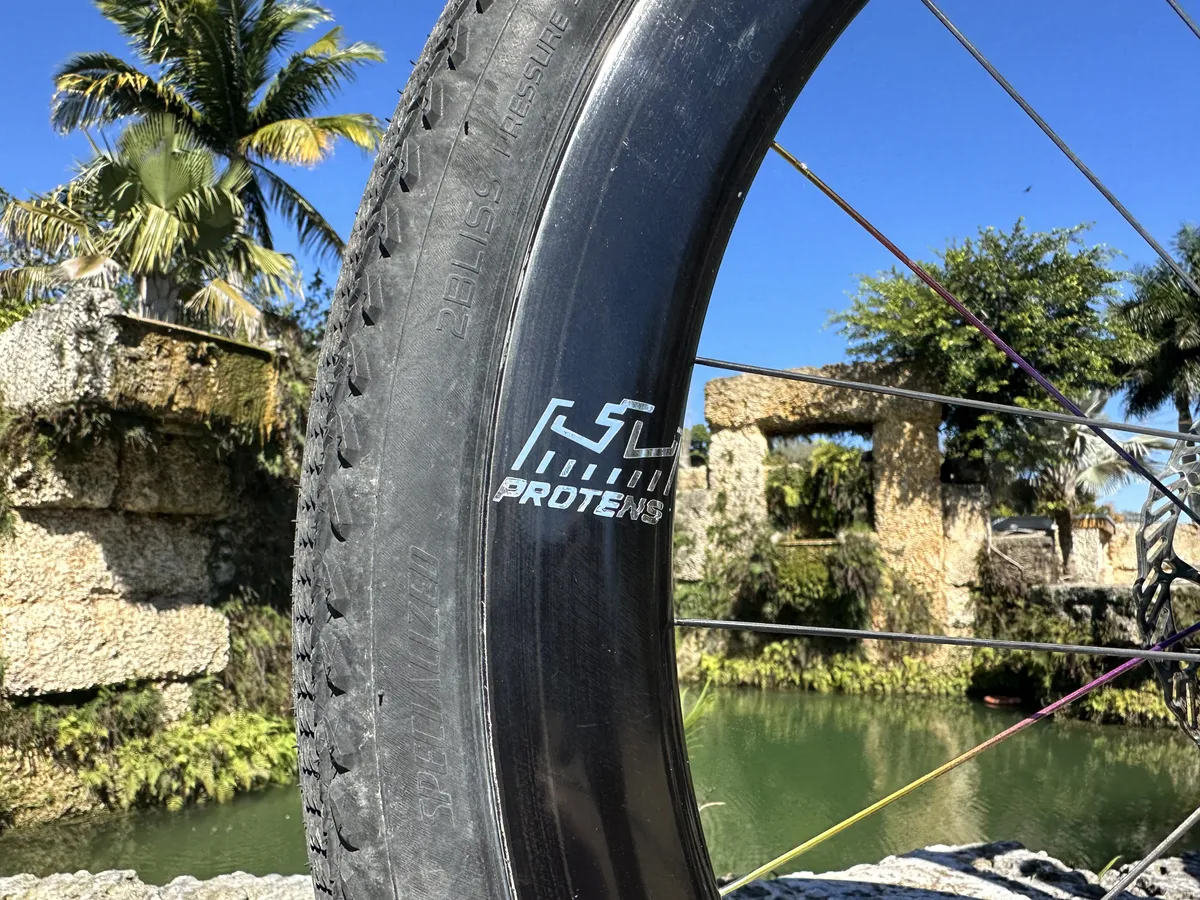
Roatta’s wheels are hand-built in Germany by Protens.
For Roatta’s most aero setup, he chooses 51mm-deep wheels with a heavier carbon layup to make them stiff and heavier. He says this gives them a higher rotational mass to go faster and use fewer spokes “for less rotational drag”.
The rainbow titanium spokes are at the highest tension possible. This stops the wheel going out of true, according to Roatta. They are shod with Specialized Pathfinder 2Bliss Ready tyres.
The Trailmech hubs with asymmetric hub geometry are made in Ukraine. Roatta adds: “When you see the inside of the hubs, you’ll freak. It’s really cool.”
The hubs use an unusual conical-shaped 50-tooth ratchet with a six-degree angle engagement.
How do you train to be a gravel champion?

Roatta now trains specifically for gravel racing, with interval sessions on Tuesdays and Thursdays.
He also runs a fruit company with his partner, Edelle Schlegel. Miami Fruit grows “unique varieties and ships crazy fruits” all over North America.
At the outset, he hauled up to 225kg of fruit on a steel touring bike hooked up to a bike trailer. His longest round trip was 130km from farms to markets across Miami.
He adds: “I was doing lots of zone two training, hauling large quantities of fruit on my bike. That was my stubborn and passionate desire to keep the fruit as local as possible and be sustainable.”
He stopped transporting his produce by bike when the weight reached 450kg.

